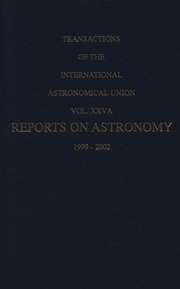No CrossRef data available.
Article contents
13. Commission des Éclipses de Soleil
Published online by Cambridge University Press: 25 April 2016
Extract
Since the date of the 1935 Paris meeting two total eclipses have been successfully observed. Throughout the long path crossing Siberia and Japan the weather on June 19, 1936 on the whole about lived up to predictions. On account of widely scattered clouds neighbouring expeditions had quite different luck with the weather. In contrast, the June 8, 1937 eclipse was seen throughout the whole track under universally clear skies, which is all the more surprising for the reason that eclipse expeditions to the tropics usually fare badly with the weather. Stewart and Stokley in a ship at sea were able to observe the eclipse with a measured duration of 7 min. 6 sec., the longest period of totality in 1200 years.
- Type
- Part I Reports and Recommendations Presented to the General Assembly by the Executive Committee and the Commissions of the Union
- Information
- Copyright
- Copyright © International Astronomical Union 1976 1939


